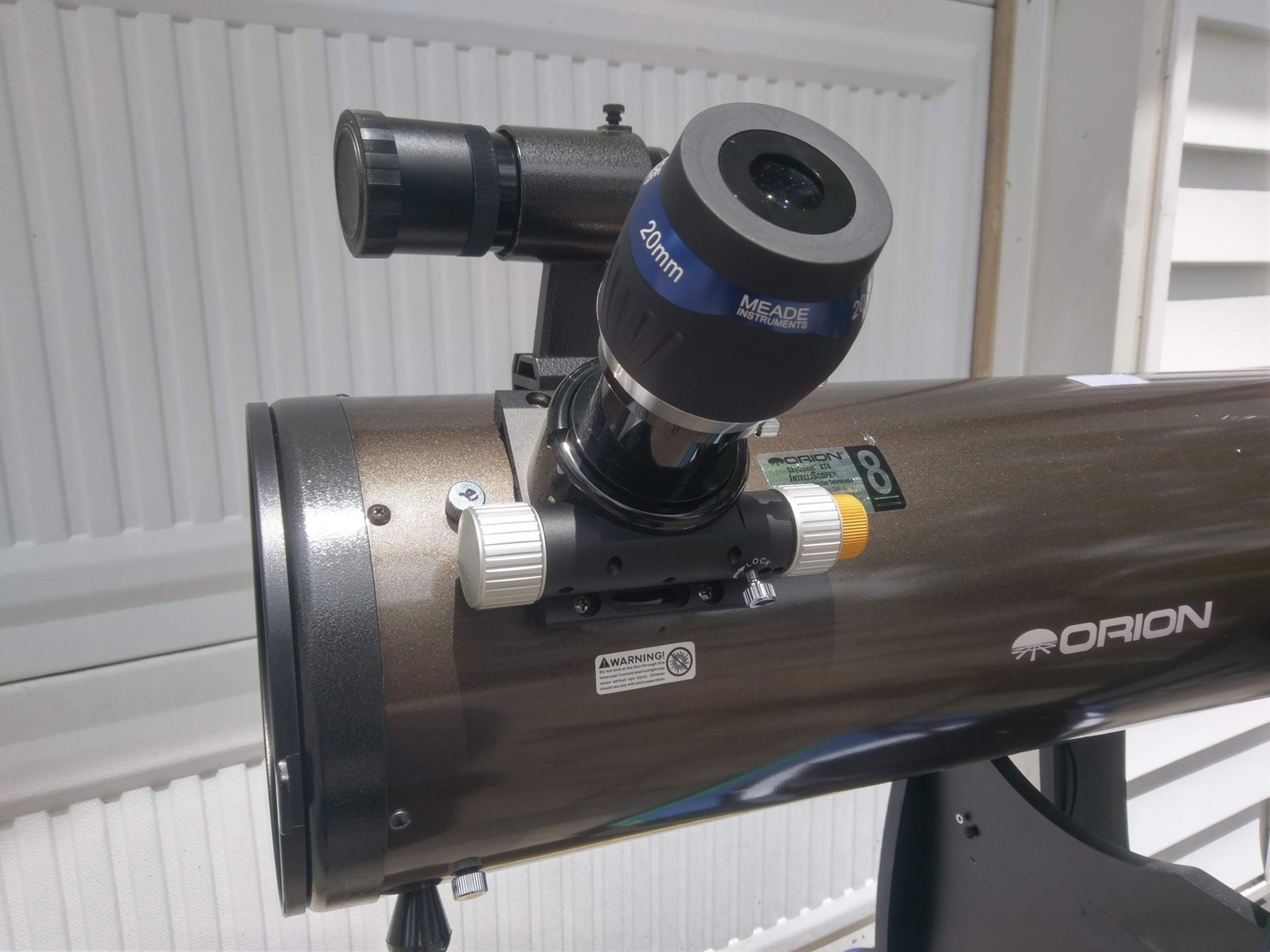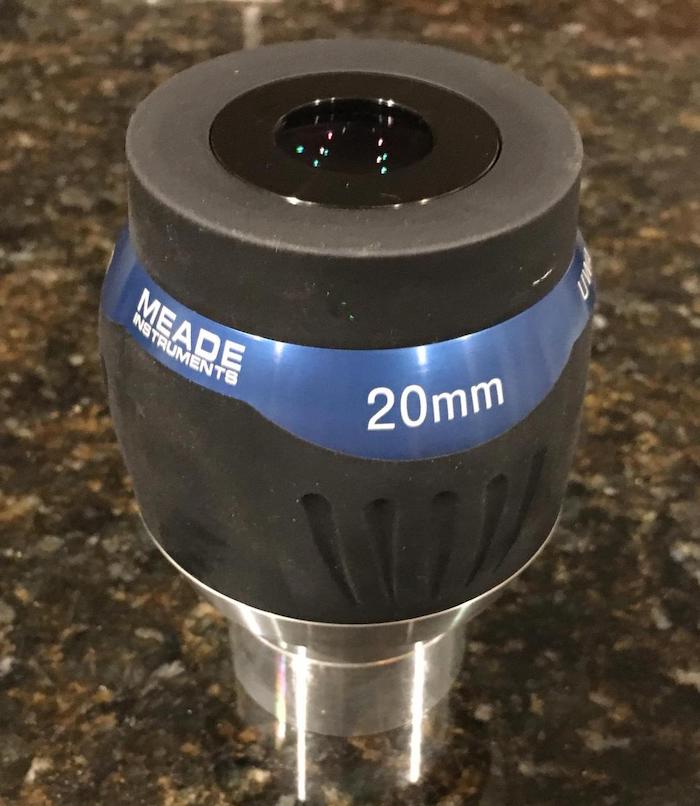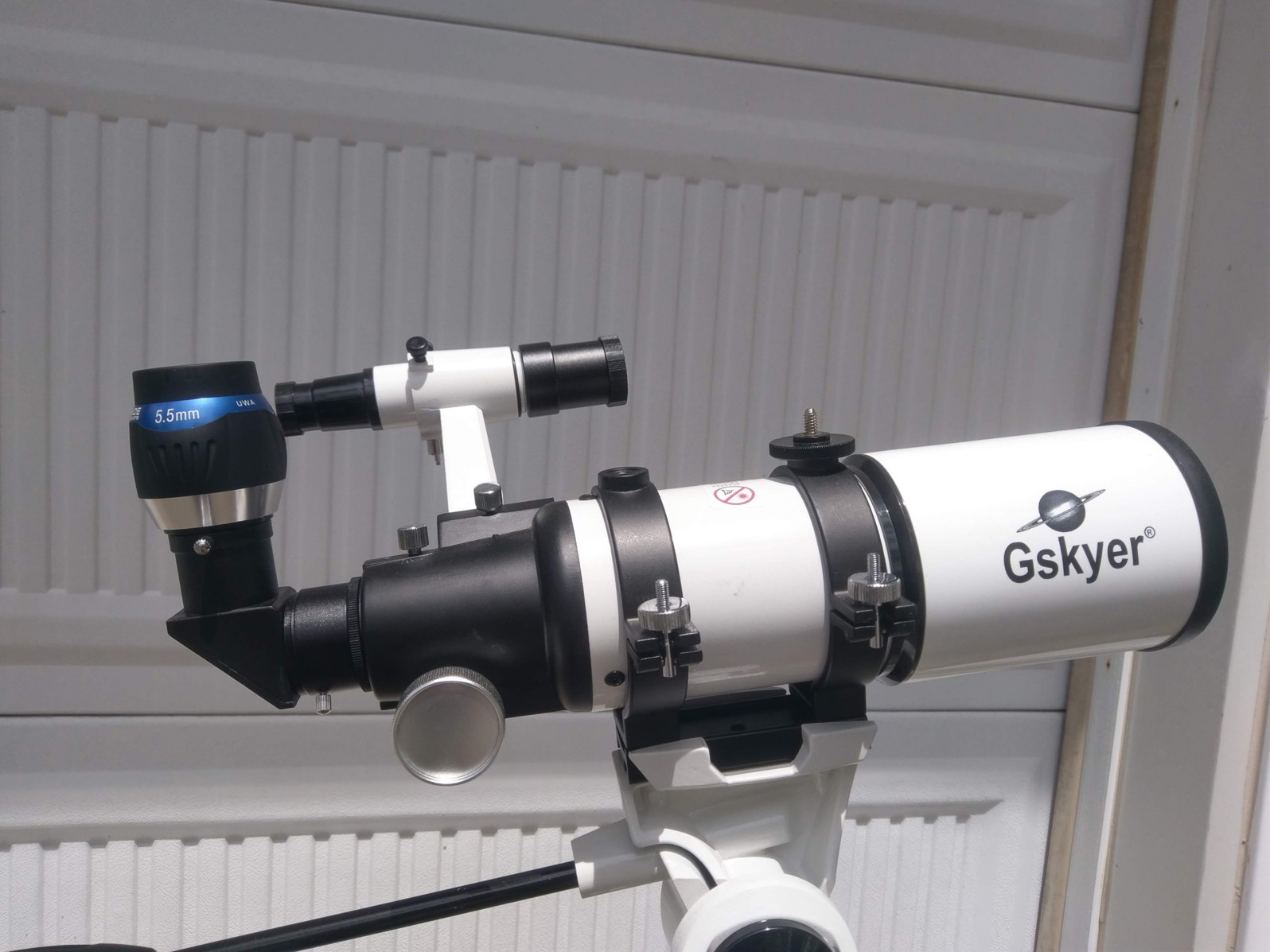
Whether you are upgrading from the eyepieces that came with your new scope or you are an experienced telescope owner looking for a better experience, the Meade Series 5000 Ultra Wide Angle (UWA) family of eyepieces is worth a look.
I think where the Meade 5000 UWA really shines is in its value. If I look at them in the context of cost and performance, they really deliver excellent value.
I own the Meade UWA 20 mm and the 5.5 mm, and I have used the 14 and the 8.8 that belong to friends. I use them in scopes of focal ratio from f/5 to f/15. From the numbers I have gathered, eyepieces that deliver a similar level of optical performance often cost 40% to 100% more.
For example, I also have Explore Scientific 82 degree eyepieces. These are well respected in the market but typically cost a lot more than the Meade UWA. Yet, I consider the optical performance of the two to be very similar.
I use it extensively as a low-power, wide-angle eyepiece, and I recommend them often. The following review will tell you why.
Features That I Like In the Meade UWA Family

The Meade UWA series consists of four eyepieces.
- 2” barrel diameter: 20 mm
- 1.25” barrel diameter: 14 mm, 8.8 mm and 5.5 mm
There used to be 30mm, 24mm, 18mm, and 6.7mm models available, but these have sadly been discontinued and are rather hard to find.
- The UWAs are all built around a 7-lens element design, similar to the Tele-Vue Nagler design that I think they attempted to emulate.
While there is nothing magic around 7 lens elements, it is indicative of a design that attempts to better handle the light, especially from lower focal ratio telescopes.
The design seeks to correct or avoid edge distortion that can come from the steep angle of light entering the eyepiece when the focal ratio of the telescope being used is low. Below about f/7, it becomes more and more difficult for the eyepiece to present a uniformly even and in-focus image across the entire field of view that is free of aberrations. Below f/5, this becomes very challenging. The Meade UWA performs well with f/5 and above telescopes.
- The Meade UWA lens elements are fully multicoated.
These coatings provide improved light transmission and help reduce internal reflections. Lesser designs may only be multicoated, coated, or even not coated at all! Meade is providing one of the best levels of coating in this eyepiece series.
- All lens edges are blackened.
This can again help control stray light inside the eyepiece. It can also help enhance contrast. I’ve often seen cheap eyepieces leave this step.
- Adjustable eye guard
Most eyepieces include an eye guard or cup that is simply a vinyl or rubber cup that helps you position your eye and reduce some side stray light. The Meade UWA eyepieces incorporate an adjustable eye guard that can be moved up and down to help you better position your eye. This is a very distinctive characteristic of the series.
- The series is parfocal, which means that as you change from one eyepiece to the next, you should not have to refocus.
This is a tremendous convenience and can be especially valuable for telescopes that do not track automatically. In a manually tracked scope, in the time it takes to change an eyepiece, the target can drift out of view. If you then need to reacquire the target, it can be more challenging if you also have to refocus. Having a parfocal eyepiece set minimizes or eliminates this refocusing. A big plus!
- Meade states that the eyepieces include “exotic” optical glasses, though they don’t provide specifics.
We often see the inclusion of special glass types in higher-end eyepieces to enhance the view.
- The UWAs are also waterproof and purged with an unknown gas, which minimizes issues of dirt or dew accumulating between the lenses and simplifies cleaning.
- The eyepieces are covered by a one-year warranty.
Understanding Specifications: Focal Length & 82° AFOV
Eyepieces are rated by focal length and apparent field of view (AFOV). These are the key specifications you need to know in order to predict how an eyepiece will behave in your telescope. The following are the key formula you will want to know.
- Focal length telescope / Focal length eyepiece = magnification
- Apparent field of view / Magnification = approximate true field of view
In the case of the Meade Ultra Wide Angle eyepieces, the apparent field of view (AFOV) is 82 degrees. Eyepiece AFOVs typically ranges from about 40 degrees to 100 degrees or more. So 82 degrees would be considered very wide.
As the AFOV goes up, the challenge of controlling that edge distortion goes up. Inexpensive eyepieces that claim AFOV of over 50 degrees often do so while delivering a considerable amount of edge distortion. The image in the center may be fine but as you move out, it may be out of focus or distorted in other ways. I’ve personally experienced that the Meade UWA eyepieces do an excellent job of controlling the edge and delivering a quality image.
Let me give you an example of how AFOV affects your viewing experience.
- Say your telescope has a 1200 mm focal length. The Meade UWA 20 mm eyepiece will deliver 60X (1200/20) magnification and approximately a 1.3-degree true field of view (82 degree / 60x magnification).
- Likewise, the Meade UWA 8.8 mm in the same scope would deliver 136X and a 0.6 degree FOV. Note that it is normal for FOV to decrease as magnification increases.
- By comparison, a 20 mm Plossl eyepiece of mine with a 50 degree AFOV delivers the same magnification of 60X but only a 0.8 degree field of view. This reduced field of view provides me more of the sensation of looking through a tube, while the Meade UWA provides a more immersive experience, more like looking through a window.
The greater field of view will also mean more drift time when using a manual telescope. This means you won’t have to nudge the scope as much to keep the target in view. And it will allow you to apply more magnification while still framing the target nicely in the eyepiece. These are all desirable traits.
Negatives That I’d Like to Share
- While the Meade UWA delivers outstanding value, the series is limited to only 4 eyepieces.
It would be nice to see a 2” in the 35 mm to 40 mm range. And I also believe that the series would benefit from a 1.25″ barrel diameter eyepiece, somewhere around 11 mm.
But this does not take away from the value and performance of the eyepieces. It just means you may have to fill in with other eyepieces that may not be parfocal with the Meade UWA.
- The series is also considered fairly large and heavy.

This comes primarily from the adjustable eyecup. This adds considerably to the weight and to the space needed in your eyepiece case. Take these into account when you are planning your purchase. If you have a fairly small scope, the weight of these eyepieces may be a concern.
I find them quite workable in my 8” and 12” Dobsonian telescopes but they are a bit heavy for my 100 mm tabletop Newtonian.
How I Plan My Eyepiece Set
Many people find 3–4 eyepieces to be optimal. The focal lengths in the Meade UWA are nicely spaced to meet that goal.
If you have a 2” focuser in your scope, the 2” 20 mm is a very good low-power wide-view eyepiece. That is how I use it.
The 14 mm, 8.8 mm and 5.5 mm make a nice 1.25” eyepiece set. However, the spacing of the 1.25” eyepieces lends themselves very nicely to their use with a 2X Barlow lens. Add a 2X barlow, and you add the equivalent of 7 mm, 4.4 mm and 2.75 mm. Now you have a broad range of wide-field-of-view eyepieces that will deliver a great view.
